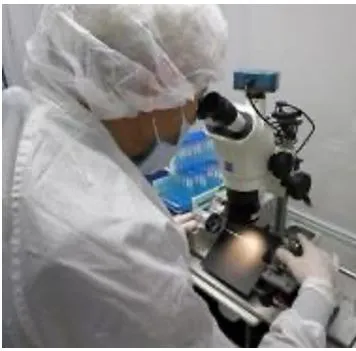
- Home
- Companies
- Fibralign Corporation
- Products
- Nanoweave - Technology

Nanoweave - Technology
Fibralign is developing a pipeline of compelling novel products which are based on its proprietary Nanoweave® scaffolding platform that can be tailored to address a wide range of high-value applications. Nanoweave technology provides the means to precisely print 3D scaffolding in such a way that mimics human tissue nano structure and directly influence the body’s repair function.
Fibralign’s patented Nanoweave® technology provides the means to induce self-assembly of molecular type I collagen to replicate native tissue scaffold outside of the body. This fundamental breakthrough enables medical grade collagen to be precisely printed with nanoscale features that mimic human tissue – to such a degree that the body’s tissue will interact with it naturally and not reject or challenge it as a foreign object. Multiple studies (Stanford, UCSF, others) have shown that fibroblasts, myoblasts, and mesenchymal stem cells proliferate, migrate and align on these fabricated matrices. Preclinical studies have also demonstrated that Nanoweave matrices induce remodeling phenotype, supporting the body’s regenerative repair and maintenance process.
There is increasing evidence, as shown in peer review articles, that the efficacy of tissue regeneration depends on creating a suitable micro-environment that can support cell function and decrease pathological healing. Nanoweave successfully mimics the targeted tissue, both in bio-mechanical properties and biochemical composition, and provides the appropriate cell-to-matrix interactions, adhesion, proliferation, maturation, etc.
Fibralign’s core technology provides a rich platform for scientific research and commercial development in the fields of tissue engineering and regenerative medicine. BioBridge represents just the first product commercialized using Nanoweave technology. The company’s development efforts have provided deep experience and an extensive “tool box” for application development, which has been validated in preclinical models through university research collaborations for a wide range of potential novel therapies. This translates into a compelling pipeline of future high-value products, which include novel treatments for ischemia (peripheral artery disease, myocardial infarction), advanced nerve repair, strokes, muscle regeneration and wound care.

